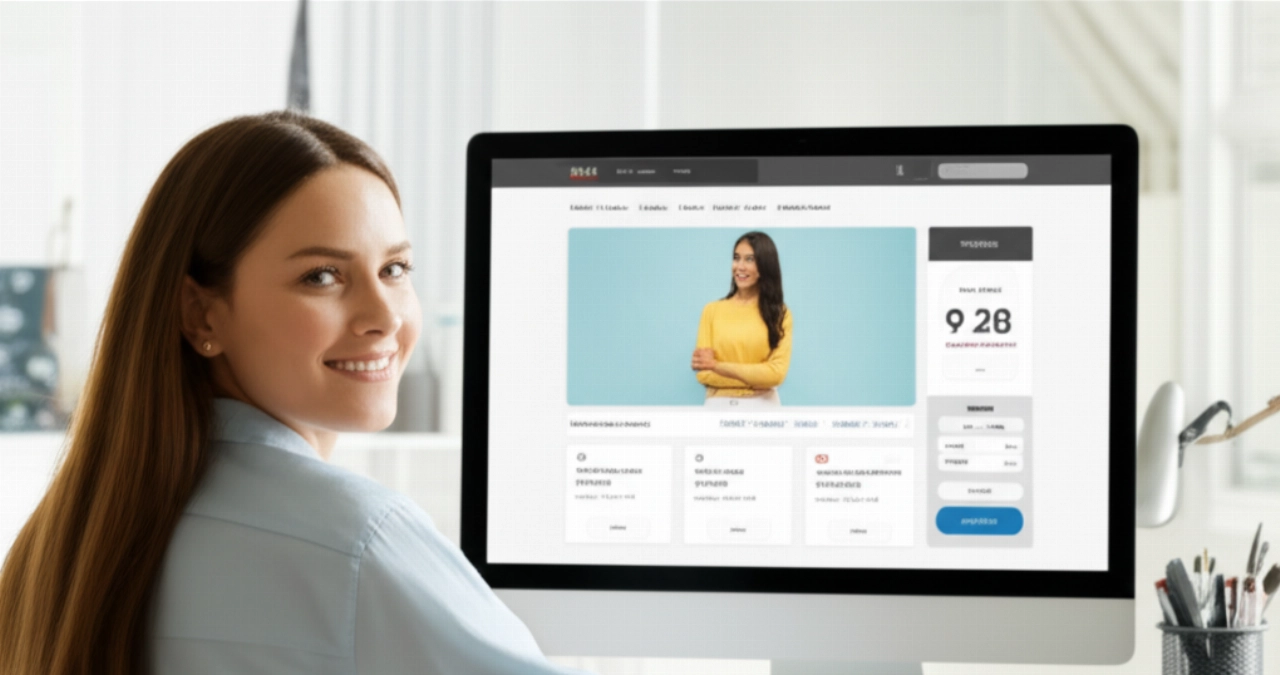In the relentless pursuit of digital dominance, many enterprise leaders fixate on platform features, integration capabilities, or even raw traffic numbers. Yet, a critical truth often remains obscured: your most powerful lever for growth, profitability, and competitive advantage isn't just what your platform can do, but how effortlessly your customers can use it. This is the realm of ecommerce UX/UI redesign – and for B2B and enterprise operations, it’s far more than a coat of paint; it’s the blueprint for your next decade of revenue.
Are you grappling with a scalability ceiling, where a clunky user experience translates directly into abandoned carts and frustrated buyers? Is your internal team bogged down by support tickets that could be eliminated with intuitive self-service features? The operational nightmare of disconnected systems (the dreaded integration hell) is often exacerbated by a user interface that forces manual workarounds, rather than empowering seamless workflows. You’re not just losing sales; you’re hemorrhaging efficiency and eroding trust.
This isn't merely about making your site "pretty." It's about engineering a digital environment where every click, every interaction, and every journey is optimized for conversion, retention, and operational efficiency. This article is your definitive roadmap to understanding how a strategic ecommerce UX/UI redesign can transform your digital storefront from a cost center into a powerful, self-sustaining revenue engine, future-proofing your business against the relentless pace of digital evolution.

Beyond the Pixel: How UX/UI Becomes Your Enterprise's Growth Engine
For enterprise and B2B organizations, the stakes of user experience are astronomically high. We're not talking about impulse buys; we're talking about complex purchasing decisions, multi-stakeholder approvals, and long-term relationships. A subpar user experience doesn't just lead to a lost sale; it can damage a critical B2B relationship, increase your Total Cost of Ownership (TCO) through increased support demands, and even impact your brand's reputation.
A truly strategic ecommerce UX/UI redesign addresses these core challenges by focusing on:
- Streamlined B2B Workflows: Empowering buyers with self-service portals, custom pricing visibility, order history, re-ordering, and approval flows that mirror their internal processes. This reduces reliance on sales teams for routine tasks, freeing them for high-value engagement.
- Conversion Rate Optimization (CRO) as a Science: Moving beyond A/B testing trivial elements to a data-driven approach that identifies and removes friction points across the entire user journey mapping, from discovery to post-purchase support.
- Reduced Support Burden: An intuitive interface with clear information architecture, robust FAQs, and accessible self-help resources significantly reduces inbound customer service queries, allowing your team to focus on complex issues.
- Enhanced Brand Perception & Trust: A professional, seamless, and efficient digital experience reinforces your brand's authority and reliability, crucial for high-value B2B transactions.
- Scalability & Adaptability: Designing a UX/UI that can easily accommodate new product lines, complex configurators, international expansion, and evolving customer expectations without requiring constant, costly overhauls.

The Hidden Costs of a 'Pretty' Website: Why Aesthetics Alone Won't Drive B2B Sales
Many companies fall into the "one-size-fits-all" trap, believing that a visually appealing template or a basic SaaS solution's default UI will suffice. This often leads to the performance bottleneck and the fear of a failed migration, as they realize too late that their chosen solution cannot adapt to their unique business logic. A superficial redesign, focused solely on visual appeal, is a costly mistake because it ignores the underlying strategic imperatives:
- Ignoring Complex B2B Logic: Consumer-centric UIs rarely accommodate tiered pricing, volume discounts, custom quotes, credit limits, or complex product configurations. Trying to force these into a generic UI creates frustration and manual workarounds.
- Poor Information Architecture: Without a deep understanding of your product catalog and customer segments, a redesign can actually make it harder for users to find what they need, leading to high bounce rates and lost opportunities.
- Lack of Personalization: B2B buyers expect tailored experiences. A generic UI fails to leverage data for personalized recommendations, dynamic content, or custom dashboards, missing out on significant revenue opportunities.
- Performance Degradation: A visually heavy but poorly optimized UI can lead to slow load times, especially on mobile devices, directly impacting conversion rate optimization (CRO) and SEO rankings.
- Accessibility Oversight: Neglecting accessibility standards not only alienates a significant portion of your potential market but can also expose your business to legal risks.
These aren't just minor inconveniences; they are fundamental flaws that erode your competitive edge and inflate your operational costs. A true enterprise ecommerce UX/UI redesign is about solving these deep-seated problems, not just masking them.

The Commerce-K Blueprint for a High-Converting Ecommerce UX/UI Redesign
At Commerce-K, our approach to ecommerce UX/UI redesign is rooted in a comprehensive understanding of enterprise complexity and B2B buyer behavior. We don't start with wireframes; we start with your business objectives, your customer data, and a meticulous audit of your current digital ecosystem. Our blueprint encompasses:
- Discovery & Strategy: Deep dive into your business goals, target audience, existing analytics, and competitive landscape. This includes stakeholder interviews, user surveys, and comprehensive UX audits to identify pain points and opportunities.
- User Journey Mapping & Persona Development: Creating detailed profiles of your key customer segments and mapping their end-to-end digital journeys. This ensures every design decision is user-centric and addresses specific needs.
- Information Architecture (IA) & Navigation Design: Structuring your content and products logically, making it intuitive for users to find what they need, regardless of catalog size or complexity. This is critical for large B2B catalogs.
- Wireframing & Prototyping: Developing low-fidelity wireframes and interactive prototypes to test concepts, gather feedback, and iterate rapidly before committing to high-fidelity design. This minimizes risk and ensures alignment.
- Visual Design & Brand Integration: Crafting a modern, professional, and on-brand visual identity that aligns with your enterprise image while prioritizing usability and conversion.
- Mobile-First & Responsive Design: Ensuring a seamless and optimized experience across all devices, recognizing that B2B buyers increasingly research and purchase on mobile.
- Personalization & Customization: Implementing strategies for dynamic content, personalized product recommendations, and tailored user experiences based on user roles, purchase history, and preferences.
- A/B Testing & Iterative Optimization: Post-launch, we implement continuous testing and optimization cycles to refine the UX/UI based on real-world user behavior and performance metrics.
This systematic approach ensures that your ecommerce UX/UI redesign isn't just an expense, but a strategic investment with measurable ROI.
Case Study: From Clunky Legacy to Conversion Powerhouse – A B2B Transformation
A global industrial supplier, struggling with an outdated, difficult-to-navigate ecommerce platform, approached Commerce-K. Their legacy system, while robust on the backend, presented a user interface that was a significant barrier to self-service, leading to an overwhelming volume of customer service calls and frustrated sales reps. Their conversion rates were stagnant, and their B2B clients were increasingly turning to competitors with more intuitive online ordering systems.
Commerce-K undertook a comprehensive ecommerce UX/UI redesign, starting with in-depth user research across their diverse client base. We reimagined their product catalog navigation, implemented a powerful search functionality, and designed intuitive dashboards for order management, custom pricing, and account history. We also integrated complex product configurators directly into the UI, allowing clients to build custom solutions with ease.
The results were transformative: a 35% increase in online self-service orders within the first six months, a 20% reduction in customer support inquiries related to order status and product information, and a significant boost in customer satisfaction scores. The new UX/UI didn't just look better; it fundamentally changed how their B2B clients interacted with their business, unlocking new levels of efficiency and revenue.
Frequently Asked Questions about Ecommerce UX/UI Redesign
What is the typical ROI of an enterprise ecommerce UX/UI redesign?
The ROI is substantial and multifaceted. Beyond direct increases in conversion rates and average order value, you'll see significant returns from reduced customer support costs, improved operational efficiency (less manual order processing), enhanced customer loyalty, and a stronger brand perception. While specific figures vary, clients often see double-digit percentage improvements in key metrics within 6-12 months post-launch.
How long does an enterprise ecommerce UX/UI redesign project typically take?
Project timelines vary based on complexity, the size of your product catalog, the number of integrations, and internal stakeholder availability. A comprehensive enterprise redesign typically ranges from 4 to 9 months, from discovery to launch. Our agile methodology ensures continuous progress and transparent communication throughout the process.
Will a redesign impact our existing SEO rankings?
A well-executed ecommerce UX/UI redesign, particularly one that involves significant changes to information architecture or URL structures, requires meticulous SEO planning. At Commerce-K, SEO continuity is a core consideration from day one. We implement comprehensive 301 redirects, optimize new content, and ensure technical SEO best practices are followed to protect and enhance your search rankings during and after the redesign.
How does a UX/UI redesign address B2B-specific challenges like complex pricing or product configurators?
Unlike B2C, B2B UX/UI design is inherently more complex. Our process specifically accounts for this by designing intuitive interfaces for tiered pricing, custom quotes, contract-specific catalogs, and sophisticated product configurators. We focus on creating self-service tools that empower your buyers while reducing the burden on your sales and support teams.
Is A/B testing included in your redesign process?
Absolutely. A/B testing and iterative optimization are fundamental to our approach. Post-launch, we continuously monitor user behavior, conduct A/B tests on key elements, and make data-driven adjustments to ensure your UX/UI continues to perform optimally and adapt to evolving user expectations and market trends.
Your Strategic Partner in Digital Transformation: The Commerce-K Difference
The decision to undertake an enterprise ecommerce UX/UI redesign is significant. It's an investment in your future, a commitment to your customers, and a strategic move to outmaneuver your competition. At Commerce-K, we understand the stakes. We don't just deliver a new interface; we deliver a meticulously engineered digital experience designed to unlock new revenue streams, reduce operational overhead, and solidify your market position.
We are not merely vendors; we are strategic partners who immerse ourselves in your business, translating complex challenges into elegant, high-performing digital solutions. Our expertise in enterprise-level platforms, deep understanding of B2B complexities, and unwavering commitment to measurable results set us apart. We build the competitive moat that your competitors cannot replicate.
Stop navigating technical debt and the frustration of underperforming digital assets. Your business deserves a clear digital commerce roadmap that delivers measurable results and a user experience that delights and converts. The first step isn't a quote; it's a no-obligation Scoping & Strategy Session with our senior architects. We'll help you map your potential, de-risk your investment, and identify the precise opportunities you're currently missing.
Click here, tell us about your project, and discover how a strategic ecommerce UX/UI redesign can become your most powerful growth engine. Start building your future-proof commerce engine today.
Now that you understand the power of strategic UX/UI, explore how we ensure seamless transitions with our enterprise ecommerce migration services, or discover the competitive advantage of custom ecommerce development tailored to your unique business needs.





